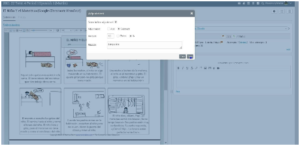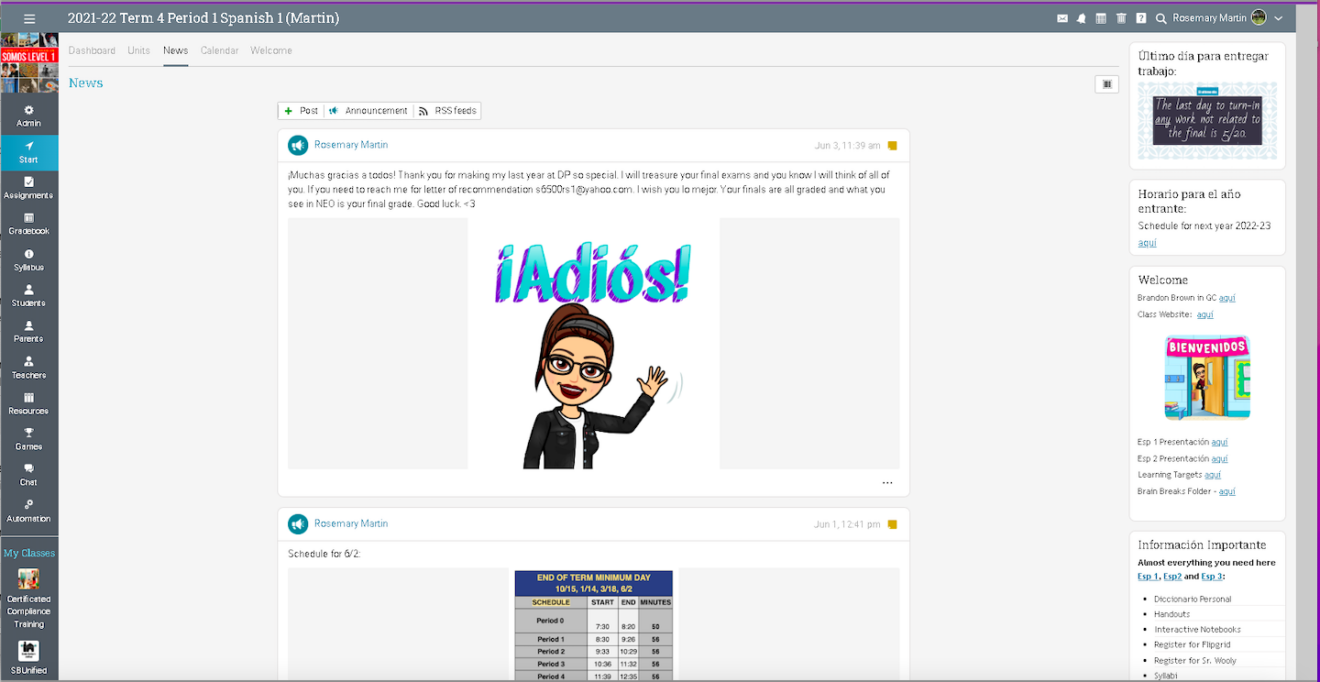With most schools back to 100% in-person learning, educators may wonder whether the online tools and platforms, such as a learning management system, that served them well during remote and hybrid models still have a place in classrooms today.
I can assure you they do. As a high school Spanish teacher for 25 years — having now taught in distance learning, hybrid and in-person settings — I’ve seen what drives engagement … and what doesn’t. Through some trial and error, and a whole lot of research, teachers like me have found and incorporated e-learning tools that significantly streamline processes, make our jobs easier and, most importantly, enhance learning experiences.
In fact, I use online tools just as much, if not more, in my in-person classes today than I did during remote and hybrid instruction. That’s because I’ve weeded out what doesn’t work, found what works well, and now know how to use online tools strategically to supplement and enrich our in-class activities. And, of course, my digital-native students often enjoy engaging in this way.
Among the wide variety of effective online tools I’ve employed in class (from educational games to interactive assessments to video apps and more), our learning management system was something we came to rely on more heavily during the pandemic. I still use it extensively – every day! It’s an important, embedded part of teaching, learning, organizational strategies and more.
As the school year kicks off, are you wondering if you’re making the most of your school’s LMS? Here are five ways I’ve found to use it inside and outside of the classroom.
1. Communicating with students
I use our LMS as a central hub for communications.
If students need to find an assignment, priorities for the week, messages and reminders from me (sent to the class or to students individually), my presentations, our syllabus or other items, they’re all on the platform, easily accessible. They can view their course progress and grades as well. Our LMS is my students’ one-stop shop; it’s indispensable.
Getting students to use and rely on the LMS means taking time to familiarize them with it, specifically where items are located. They pick it up quickly.
To improve uptake, I suggest teachers devote time, at the outset, to getting their class pages and content organized logically. Make sure your resources, messages and assignments are categorized in easy-to-find folders and grouped in a way that makes sense. Our LMS (Neo from Cypher Learning) has a highly visual interface that also makes it easy for students to efficiently find and access what they need. You don’t want students to waste time hunting things down; they should spend their time learning.
In addition to using the LMS for teacher-student communications, you can also let students communicate flexibly and effectively with each other — tapping into collaboration and messaging features during group assignments and projects, for instance. What’s more, when I group students into teams through the LMS, I’m able to open a separate window for each team member to ensure they each receive a grade for their work.
2. Reaching out to parents
Parents in your school district likely have access to your LMS too. It’s a good way for them to stay apprised of their student’s progress.
By keeping your class pages and, especially, your gradebook up to date, you can let parents get information they may want in a self-service model (cutting down on back-and-forth emails too). Parents can also see school-related updates in a timely manner and easily reach out to me if they have any questions or concerns.
3. Saving time grading

If you’re spending lots of bleary-eyed time grading student assignments, you may want to consider using auto-grading functionality on your learning management system for assignments where it makes sense, such as pop quizzes. It’s a huge time-saver … and no red pen necessary!
You can also use your LMS to specify the maximum number of attempts a student can make on a given assignment and to automatically adjust scores based on parameters you’ve set when work is submitted late. No need to do the math yourself.
But nothing is set in stone; it’s also possible to make adjustments on a student-by-student basis, based on their circumstances. And through the LMS, you can assign and score extra credit too, and even adjust the standard grading rubrics to match what you use in class.
As mentioned, in addition to grading individual assignments through the LMS, I use the platform as my overall gradebook too.
4. Linking to resources

The LMS doesn’t just house messages and assignments from me; it’s a destination where students can centrally access all the class resources they need that will help with learning. For example, on my class site, students can easily find an online Spanish-English dictionary, registration codes for the many online programs we use (Duolingo, Senor Wooly, Flipgrid, etc.), online books and a link for unlimited free tutoring.
Again, I encourage teachers to organize resources intuitively and in a visual way. It’s also helpful to keep units separate so you don’t overwhelm students. You can wait to make content visible to students until the appropriate time for them to consume it.
5. Personalizing learning experiences
Your learning management system likely gives you the ability to sort assignments by grade/performance and category (reading, writing, listening, speaking, etc.) so you have a better sense of who’s excelling and who may be struggling and can reach out accordingly.
For students with an individualized education program, you can use the LMS to make sure their accommodations are reflected: whether that’s getting extra time on work, removing nonessential assignments from their view or showing special assignments to support their learning. You can make certain work visible to a group of students (such as those who need more practice in a given area or those in need of a challenge).
Some LMSes also incorporate artificial intelligence features that support personalized and competency-based learning journeys. I think that makes learning more effective, more equitable and stickier.
Making the most out of your learning management system
One silver lining of the pandemic is that it compelled schools and teachers to find new — and sometimes better — ways to deliver information. We discovered new efficiencies and new tools, along with new ways to use the platforms that were already in our toolbox.
Like many of my colleagues, I found that, prior to the pandemic, I’d just been scratching the surface of our LMS’ functionality. I use it more deeply, frequently and strategically now to address a multitude of classroom needs. With these tips and use cases above, hopefully you can make the most of yours too — using collaboration capabilities, organizational features, auto-grading and more to drive A+ learning experiences.
Rosemary Martin is a high-school Spanish teacher who has taught Spanish 1 through Spanish 4 AP Language. After 25 years at the Santa Barbara Unified School District in California, she is teaching at the Long Beach Unified School District this fall. Martin is a published author in English and Spanish, aspiring instructional designer and winner of Cypher Learning’s #NEOClearsTheList contest for driving innovative online learning experiences.
_______________________________
Subscribe to SmartBrief’s FREE email newsletter to see the latest hot topics on EdTech. It’s among SmartBrief’s more than 250 industry-focused newsletters.
